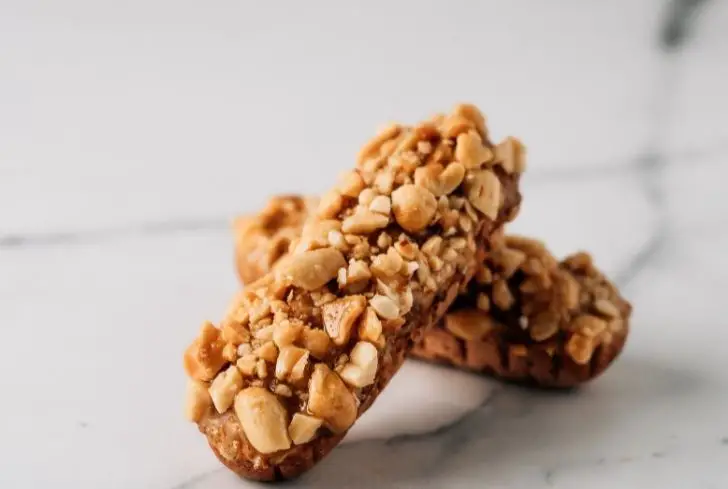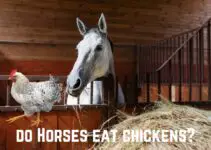Nutty bars are delicious snacks made of wafers sandwiched together in a peanut butter mixture and covered in bits of chocolate. Popular among children and even adults, Nutty Bars are the perfect snack—for humans, of course.
But if you have a dog who eats anything and everything in sight, you might want to start keeping things a little out of reach. Even if you do that, there is always a possibility that your furry critter might get their paws on something they are not supposed to eat. In this instance, that “something” might just be a Nutty Bar.
Chocolates are generally known to be poisonous to dogs, especially dark chocolates. Nutty Bars consist of white chocolate, but that does not make them any less dangerous. This article will guide you on what you need to do if your dog ate a nutty bar, the effects of eating a nutty bar and how to handle it.
Contents
What Should You Do If Your Dog Ate a Nutty Bar?
If your dog ate a small quantity of the chocolate, then you may rest easy. Chocolate isn’t harmful when taken in small quantities. Your dog may experience mild symptoms such as diarrhea, hyperactivity, or vomiting two hours after ingestion.
However, if your dog consumes a large quantity of chocolate, you can induce vomiting immediately after noticing the occurrence to rid the dog of the toxic substance.
One way to induce vomiting is by giving your dog one (1) teaspoon of hydrogen peroxide (3% per 10 pounds). The dosage can be repeated 10 minutes later if the initial one does not successfully induce vomiting.
Can Dogs Eat Nutty Bars?
It is advisable not to feed dogs Nutty Bars because they contain chocolate. Nutty bars are not exactly a danger to dogs, but they are capable of being harmful. Although dogs can eat nutty bars in minute quantities, they shouldn’t even eat nutty bars at all.
In addition to chocolate, nutty bars also contain sugar and fat. These are harmful to dogs and may cause pancreatitis.
Instead of nutty bars or any other chocolate derivatives, here are five healthy foods you can eat and feed your dog:
- Cooked Chicken: You can eat it, and so can your dog. Cooked chicken is a common ingredient in pet food. You can also add it to your dog’s regular dog food to give it extra protein. If you are out of dog food, cooked chicken can serve as a healthy and savory temporary alternative.
- Cheese: This one is a bit tricky because if your dog is lactose intolerant, it may react negatively to being fed cheese. If you are unsure about whether your dog is lactose intolerant, feed them a little amount of cheese and monitor their reaction. If your dog is not lactose intolerant, then it is fine to give them cheese. Go for cheese that is low in fat. Do not overfeed your dogs on cheese, as it can cause an accumulation of fat. Cottage cheese is generally a good choice of cheese for dogs.
- Salmon: Salmon is a great source of omega-three fatty acids. It helps your dog’s immune system and keeps your dog’s coat shiny and healthy. You can consider adding salmon to your dog’s dish or passing them fish skins when you don’t want them anymore.
- Egg: Eggs are a fantastic source of protein for your dog. In addition to protein, eggs are also a source of riboflavin and selenium, which dogs can digest easily. When giving eggs to your dog, be sure to cook them thoroughly to avoid the risk of salmonella. You could add eggs to your dog’s diet by scrambling, boiling, or poaching them. Do not add seasoning.
- Oatmeal: Cooked oatmeal is a great source of fiber. It is extremely beneficial to older dogs and those with bowel issues. Oatmeal is also a great alternative for dogs allergic to wheat. When cooking oatmeal for your dog, be sure to get oatmeal that has no added sugar or flavor.
What Happens When Dogs Eat Nutty Bars?
Eating a lot of nutty bars can give your dog chocolate poisoning. Chocolate poisoning occurs when your dog can’t digest the chocolate, and chemical residue stays in your dog’s system.
This residue causes many problems for your dog if it remains in its body for too long. As a result, your dog could display restlessness, become thirstier, and pant more often.
The symptoms shown depend on the quantity eaten. Dogs that eat a little portion of the nutty bars face milder symptoms and a low level of poisoning. This is mainly characterized by discomfort and thirst.
In the case of a lot of nutty bars, your dog could become seriously ill. Eating the nutty bar may not cause your dog chocolate poisoning, but the sugar and fat from the chocolate and the wafers could cause pancreatitis.
Dogs with sensitive stomachs can be more affected by eating nutty bars because their system is susceptible to changes in their food.
Can My Dog Get Sick After Eating a Nutty Bar?
The answer to this question depends on how many nutty bars your dog ate and your dog’s weight. Nutty bars do not contain a lot of dark chocolate. They only have white chocolate. Chocolate is dangerous to dogs because of the amount of theobromine in them.
Theobromine is a chemical toxin present in chocolate as well as caffeine. The darker the chocolate, the more theobromine it contains. A dog’s digestive system cannot metabolize theobromine and humans, making it a residue in their system. They are more sensitive to the chemical’s effects.
Nutty bars have white chocolate, which implies a reduced amount of theobromine. So, your dog is safe, at least from the chemical effect. However, your dog can still get ill from the effects of the fats and sugar in the nutty bar.
If your dog has eaten a nutty bar, you should keep a close eye on it for any symptoms it may display. Often, these symptoms would include panting or restlessness, diarrhea, increased thirst for water, and excessive urination. If your dog only ate a little portion of the nutty bar, it is unlikely that they would get sick.
How To Prevent Your Dog From Eating a Nutty Bar?
There are various ways you can stop your dog from eating a nutty bar. Try chastising your dog whenever it heads towards the rack you keep nutty bars or the trash after dropping a wrapper. Reinforce good behavior by rewarding them whenever they listen to you.
Another preventative measure is distracting it with a game. This instantly takes its attention from the nutty bar. This method is ideal when chastising won’t work, such as when the snack is almost or already in their mouth.
An extreme solution to use if nothing else seems to work is getting a muzzle. Although it is not an ideal solution, a basket muzzle prevents your dog from eating harmful substances. This muzzle will also give your dog enough room to pant. This solution should be temporary while you investigate other alternative methods.
On your part, you should try your best to hide away all nutty bars in a place your dog can reach with or without effort. That rules out all low-hanging cabinets, counters, or the sofa. If your dog can reach it, the nutty bar should not be there. Also, cover your trash bin after disposing of your nutty bar wrappers to prevent your dog from getting through.
Will My Dog Be Fine If He Ate a Nutty Bar?
If it does not eat a whole packet of nutty bars, your dog should be completely fine. There might be some discomfort for a while without lasting effects.
The best thing to do after your dog eats a nutty bar is to wait for them to pass all the chocolate from their system. The chocolate should be gone from their system within an hour, or at most two. If your dog is a particularly active one, then you can expect its metabolism to get rid of the chocolate as fast as possible.
If you are a bit impatient and worried about the amount of chocolate or nutty bars it ate, you could induce vomiting. It would be a big mess but ensuring that your dog is okay should be a priority.
You could give your dog hydrogen peroxide to ingest and wait for it to throw up. This should empty their stomachs of the chocolate, and your dog would be right as rain in no time.
If you are still uneasy over your dog, then call a vet. The doctor will check your dog, run tests, and tell you if there are anything wrong and possible steps to take.







